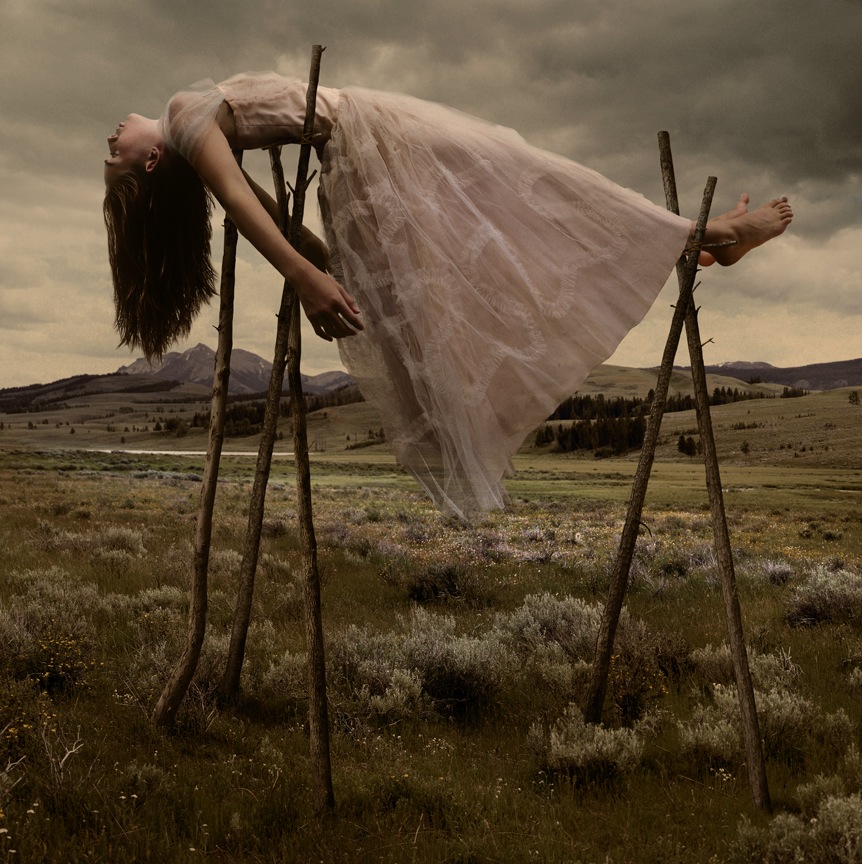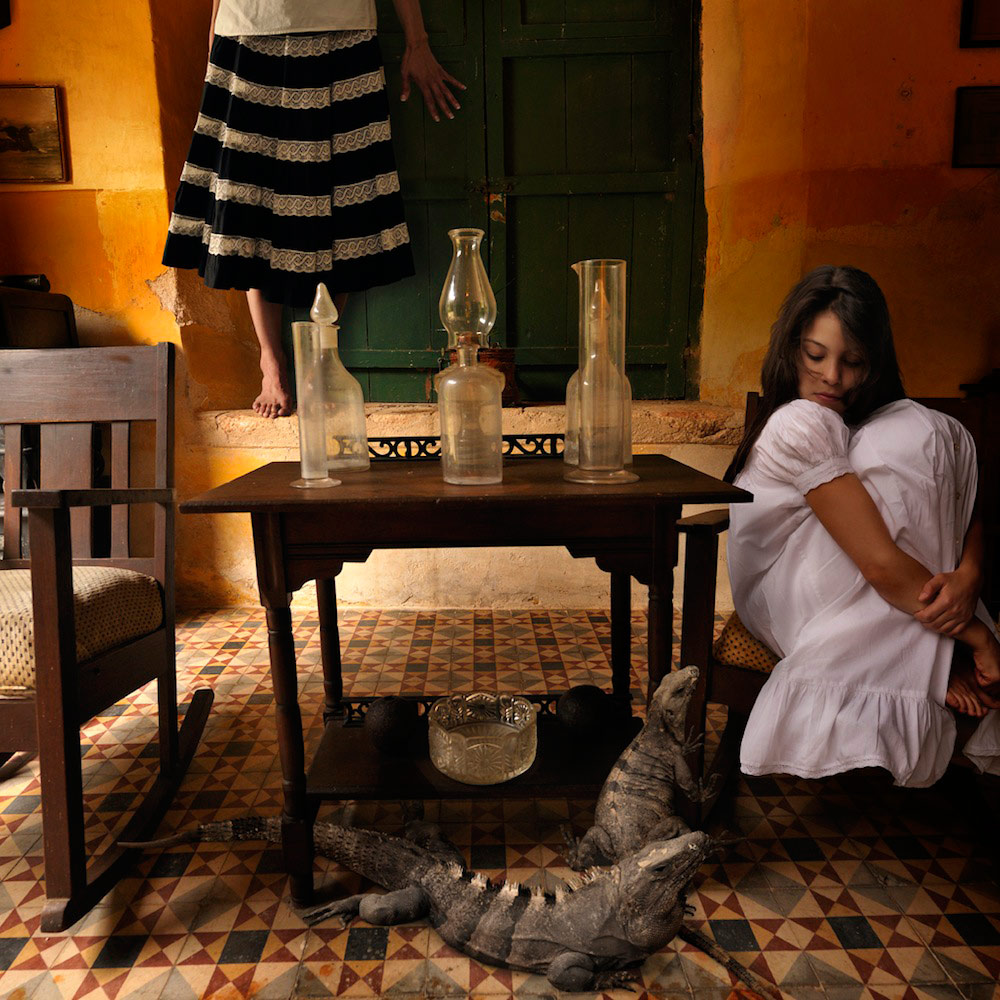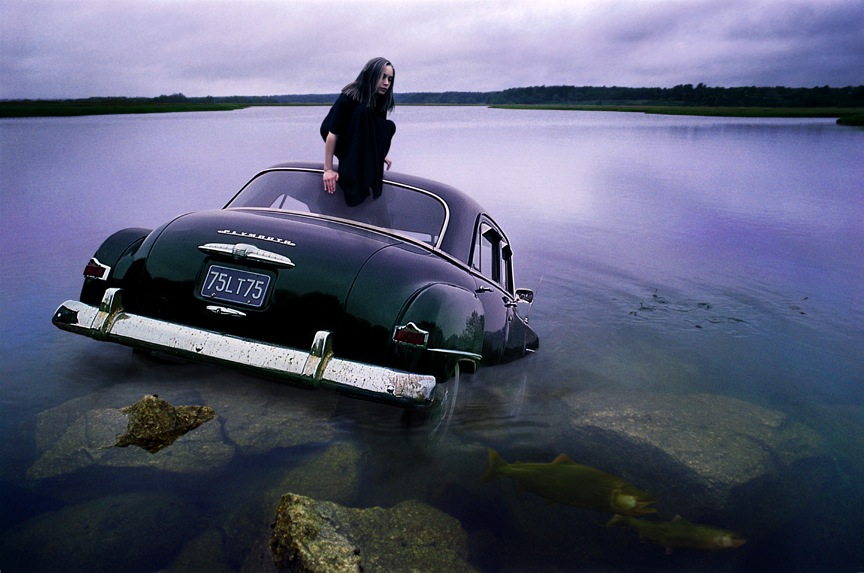What is the process of creating a photomontage? How much planning goes into the technical aspects of the photos and how much spontaneity exists within your work? How do you combine elements of each?
Inspiration for my photomontage comes from a variety of sources, including music, literature, travel, dreams, other artists, or just my musings. When inspiration comes to me, I typically will draw a small and rough sketch of my ideas. Then, I will shoot the background and possibly five to eight separate components. As I begin the construction, the original idea for the photomontage might be modified. Anywhere between thirty and sixty hours might go into creating the final image.
Your work asks the viewer to find a story within each photograph. How do you create the narrative in the image before it is executed?
We all perceive things differently, and my photomontages are no exception. I might have my own idea about the storyline expressed in the photomontage, but each viewer will interpret things differently. Generally, however, the viewer does respond to the mood that I am trying to create, even if the story varies.

Many concepts in your work involve the preservation of the environment and culture, and focus on the role of humans in the destruction. How do you want your photography to impact the fight against the disappearance of nature and culture?
I grew up on a family farm in southern Pennsylvania where, from a very young age, I learned a healthy respect for all living things. From the time I was about twenty years old, I began traveling and learning about different cultures. Without being heavy handed, I would like my photography to encourage people to care for the environment and to preserve the uniqueness of different cultures. I think this consideration happens if the viewer connects with the mood or feelings that I attempt to create in each image.
How did you transition into a career as a photographer from a graphic design background?
In art school, as a young man, I learned about both graphic design and photography. After graduation I began a career as a graphic designer. In the early 1990’s I was introduced to Photoshop as a tool for graphic design. Not long after, I began using Photoshop as a means for creating photomontages and self-expression. At first I was dabbling in creating montage images and then I developed a series of images based on a common theme in Photoshop. My first series was inspired by my travels to Mexico and discovery of the “ex votos”, or pieces of tin on which artists painted stories about miracles. Religious art has always intrigued me.

Your photomontage work is inspired by other artists, as seen by the Renaissance like images that create your series “Illumination”. Name other artists and the qualities of their work that inspire you.
I grew up near the home of the Wyeth Family in Pennsylvania who’s art influenced me immensely. My grandfather, an illustrator and painter, was an acquaintance of NC Wyeth, and in turn I was influenced by the illustrative nature of his paintings. His son, Andrew Wyeth, painted stunning landscapes filled with emotion, and I try to fill my photomontage with the same depth of feeling.
What is your advice for an emerging photographer?
My advice for an emerging photographer is to expose yourself to a wide range of artists and genres. Then, when you are inspired, I encourage you to follow your gut. Be willing to work and rework your idea until you are satisfied. Ask for feedback from others, but always stay true to your personal vision.

How do you achieve the elements of each photomontage? Do you plan for different images to create, or do you find them in whatever setting you are in?
Both things happen. I might have an idea and then go out to seek the images needed for constructing the image. At other times I am inspired to create an image based on a setting or an experience.
Are the concepts of your work inspired by what is happening at the current time? Do you find yourself repeatedly returning to any specific concepts?
The concepts behind my work are based on my personal values. I am really interested in ecology and caring for the environment, as well as the purity and beauty of the animal kingdom. These are both reoccurring themes in my work. I often find that the idea of innocence, within both children and animals, is often incorporated in my photomontages.

How do you feel about the “age of technology” we are currently living in? Do you feel pressure to keep your work up to date with the latest technological mediums?
I think that the current burst in technological advances are very exciting. That being said there needs to be a balance. Computer hardware and software provide tools for self-expression, these are integral in my digital photography. However, I typically use digital photography in a painterly way to create photographic images. I don’t like the idea of some over-the-top images that can be seen in digital photography.
What will your next series focus on? Is there a specific issue that you want your work to involve?
I am currently finishing a new series, which shows the connection I feel with animals. It goes back to my roots on a rural farm and my experiences in appreciating the beauty of nature.
What would your work be like if you did not have the access to technology? Do you have any examples?
If I didn’t have technology, I would probably be a painter like my grandparents. I try to create a painterly quality in my photomontages by creating layers, texture, and lustrous colors.
Interview by Zoe Ingram
Photos Courtesy of Tom Chambers


